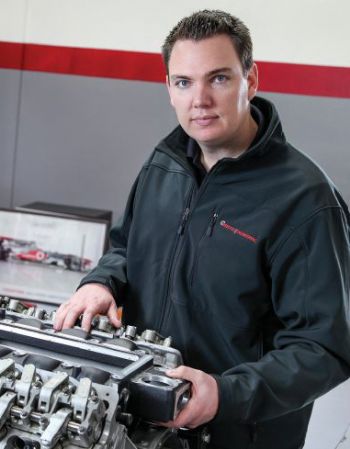
While Mercedes-AMG cars offer sporty styling, luxury and — above all — impressive power, some AMG owners crave even more power and are turning to Weistec Engineering to take their cars to the next level of performance.
Michael Weiss started Weistec Engineering in Santa Ana, California, to satisfy his own appetite for speed, and subsequently that of other Mercedes-AMG owners.
Mr Weiss, President and CEO, says: “With my background in mechanical engineering, I worked in the production of parts for the ‘performance after-market’; and although we worked mainly on American cars such as Mustangs, we drove Mercedes for our personal vehicles and saw a niche in the market for offering performance products for these cars, so Weistec was born.
“We make and install performance products for Mercedes-AMG cars, including supercharger upgrades, turbocharger upgrades, exhaust systems, transmissions, ECU tuning solutions and drive-lines — everything that allows cars to develop more power and have better drivability. More power means engines producing anywhere from 500hp to well over 1,000hp.”
All components are designed to reflect the Mercedes style, so they have the look, fit and excellence of design and materials found in OEM parts.
For example, Weistec superchargers use high-quality castings that closely match the Mercedes style. They turn at speeds up to 18,000rev/ min and produce a boost pressure of more than 10psi.
Racing performance
The company’s racing-engine superchargers, which produce a boost pressure of more than 30psi boost at over 30,000rev/min, are engineered for high performance and dependability, with components that are precision-machined to exacting tolerances on Weistec’s Haas VM-3 CNC Mold Making VMC and ST-30 turning centre (
www.haascnc.com).
The superchargers fit the engines precisely, and they work seamlessly with other Weistec components to efficiently get the power to the wheels.
Highlighting the performance that Weistec can achieve, Mr Weiss says: “We have multiple Mercedes world records, but our customers mostly want to see things like quarter-mile times and 0-60mph times.
We’ve beaten our own record twice for the quarter-mile; right now, the overall Mercedes world record stands at about 9.60sec and over 153mph. That is using our 6.2-litre M156 supercharged engine in a CLK63 AMG.
It is naturally aspirated from the factory, but we add our supercharger, along with all the complementary parts required to accommodate the power increase.”
CNC machining

Weistec depends on its Haas CNC machines to make its precision products.
“The whole experience with Haas was very good, right from the outset when dealing with the local sales reps,” says Mr Weiss.
“They were knowledgeable and very helpful, asking to see the parts we make so as to get an understanding of what we do, what machinery we needed and the best way to produce the various parts.
"For more than a week, we discussed which machines to get. We deliberated over specifications, including table size and spindle speed, before deciding on the VM-3 Mold Making VMC for milling and the ST-30 for turning.
“Moreover, the VM-3 came as standard with most of the options that we wanted.
“We really like the parts catcher on the ST-30, which delivers parts through the door to a tray without shutting down.
“That saves a lot of time. Meanwhile, the VM-3 has probing, a programmable coolant nozzle and extra lighting — plus more. We really put the machines to the test.
“They are not simply cutting aluminium all day; we cut a lot of stainless steel and some Inconel, and we often push our cutting tools to their limit.”
Weistec uses high technology wherever possible, and the company will often make rapid prototypes on its in-house ‘3-D printer’ before using the machining centre to make a test part.
Larger, more-complicated 3-D models are sent out for rapid prototyping. Using the 3-D prototypes to verify ‘placement’ and design concepts reduces costs; they also allow an in-expensive model to be made and tested before committing to the time and expense of production machining and materials.
Confirming quality
In addition to the usual QC measuring instruments, Weistec’s quality assurance department is equipped with a Faro portable 3-D measuring arm with both laser scanner and touch probes.
A computer-generated scan can produce measurements down to 0.0005in. Moreover, scanned images can be rotated and manipulated on-screen to show how a component will appear when it is installed in the vehicle.
Weistec also scans the engine compartment without the engine installed and uses the images to check for interference; scanned images of the engine with new components installed are then “fitted” into the scan of the engine compartment to locate areas where the designs may need adjustment.
This reverse engineering is necessary because Mercedes does not make design information available to suppliers of after-market equipment.